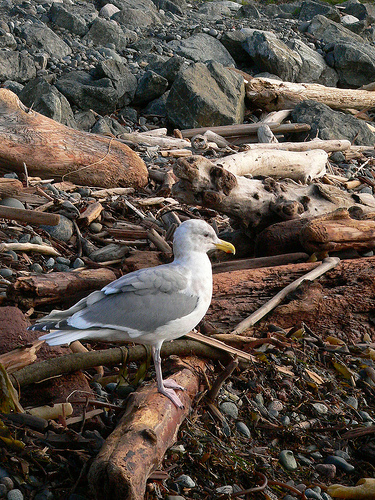By Katie Stobbart (The Cascade) – Email
Print Edition: March 20, 2013
Most of us have—at some time or another—visited the Pacific coastline. Living so near the ocean has its joys: summer afternoons basking in sunlight and salty wind, building sandcastles or beachcombing for treasures that wash up in the foamy waves.
However, there are dangers associated with our proximity to the large body of water. As we saw two years ago, high-magnitude earthquakes can trigger larger waves or a tsunami, which can overwhelm coastal cities like our own. In March 2011, a tsunami devastated the densely populated island country of Japan. Connected by the same ocean, we are not unaffected by this tragedy.
Though the bulk of debris from the tsunami has already sunk, roughly 1.5 million tons are still afloat in the Pacific ocean, and it is unclear how much of this detritus will make its way to the west coast of North America, or when it will arrive.
Small coastal communities are not prepared to process mass amounts of debris. Currently beach clean-up is taken on by volunteers, mostly local residents. Yet this is not a task that can be ignored or postponed until after the debris washes up on the shore.
It can be difficult to clean up after an event when there is no one to blame. Who is responsible for handling the aftermath of a natural disaster? Who will provide the resources and the time required to cope with the pieces of Japan that drift in our direction?
I think the answer to this is complicated, but it boils down to a collective effort.
With thanks for the aid that Canada supplied during the crisis (over $4 million were donated to relief efforts from Canadians), Japan has offered to help fund clean-up efforts on the West Coast by giving $1 million to the federal government. So far all three levels of government have been covering the costs associated with clean-up.
These are both steps in the right direction. It is vital to avoid, as much as possible, the pollution of our coastal waters – and in some cases to prevent invasive species clinging to the debris from taking root and posing a risk to native species of marine life.
What I would like to see moving forward is increased involvement from other communities that are close to our coast. Why not extend a helping hand to our neighbouring communities that happen to be situated on the water’s edge?
Even those of us who live further inland take advantage of our ability to access nearby beaches in White Rock, Vancouver and on our coastal islands. British Columbia is set apart by its natural splendour – it’s one of the reasons many of us choose to live here. It is to all of our benefit, then, to ensure that our natural environment is protected.
If you would like to participate in cleaning up the coast as debris from the tsunami washes up, you can visit the Great Canadian Shoreline Cleanup website to offer your time.
We are all connected, and when tragedies occur it is important to recognize those things that connect us; the Pacific Rim is linked by one sea – an ocean that also brings our local communities together.


